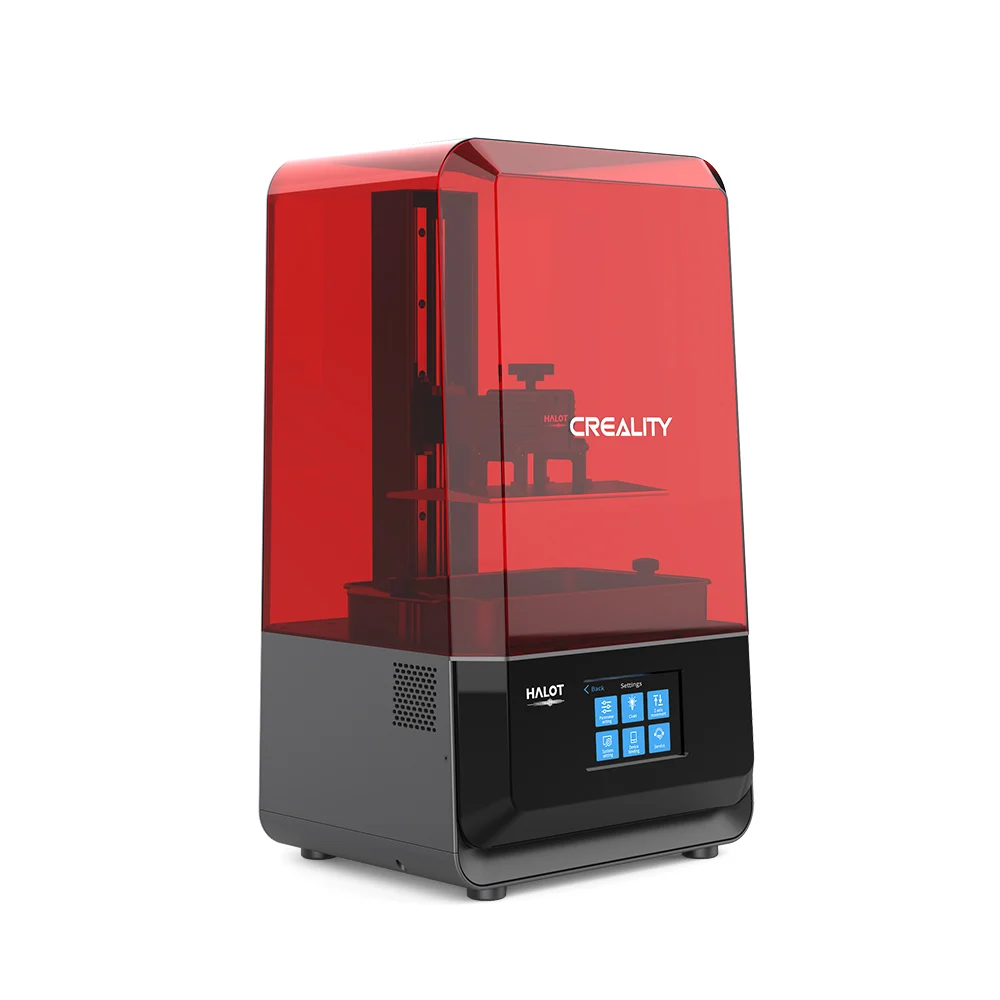Compare Comgrow T300 vs Halot Lite
Comparison between the best 3D printers
Choose the best 3D printer at the best price. The cheapest 3D printers are here.
Buy a 3D printer here with 3D Fila.
 |
 |
|
| Model | Comgrow T300 |
Halot Lite |
| Printing Material | Filament | Resin |
| Buy Filament for Sovol Comgrow T300 | Buy Resin forCreality 3D Halot Lite | |
| Estimated price | $449,00 | $400,00 |
| Manufacturer | Sovol | Creality 3D |
| Release Year | 2024 | 2021 |
| Print Volume [mm] | 300x300x350 | 192x120x200 |
| Printer Size [mm] | 503x631x831 | 330x301x572 |
| Weight [kg] | 17 | 10,6 |
| Power Loss Recovery | YES | NO |
| Maximum Resolution [mm] | 0,1 | 0,01 |
| Processor | 64 bit | |
| Display | Touchscreen 5'' | Display touchscreen 5'' |
| Power Supply | 150 W | |
| Connectivity | USB, WiFi | SD / USB |
| Operating systems | Windows, Linux, Macbook | Windows, Mac, Linux |
| Date of registration in the system | 2024-05-10 | 2022-11-04 |
| Release date | 2024 | 2021 |
| Extra features | The Sovol Comgrow T300 printer stands out for its technological innovations and advanced features. With a print size of 300mm300mm350mm, the T300 offers true linear rails on all axes, ensuring greater stability. Its Klipper-based intelligent core and 64-bit microcomputer increase printing speed and quality through pressure advancement and input shaping. The extruder with a gear ratio of 6.5:1 allows for more precise material control, optimizing the printing of flexible materials. In addition, the T300 features a rapid filament cooling system with a high-speed fan and a circular duct piece that improves cooling efficiency. With a 4.3-inch high-refresh rate touchscreen and an 81-point automatic leveling system, the T300 simplifies the preparation and execution of 3D prints. | Crealitys Halot Lite printer stands out in the mid-size resin 3D printing segment, with a build volume of 192 x 120 x 200 mm and 50 micron resolution. It offers a monochrome LCD for fast and durable printing, and an upgraded light source that ensures over 80% uniformity across the print bed. It includes Wi-Fi connectivity for remote control and updates, an ARM Cortex CPU for efficient performance, and is compatible with Halot Box and Lychee slicing software. It also has an activated carbon filter to reduce odors. |
| Support for multiple colors and materials (AMS and CFS) | NO | NO |
Notes * |
||
| Cost-benefit | 8 / 10 | 8 / 10 |
| Hardware | 3.6 / 10 | 1.2 / 10 |
| Tela | . | . |
| Print volume | 4 / 10 | 3 / 10 |
| Performance | 5 / 10 | 9 / 10 |
Conclusion |
| In comparing the Comgrow T300 and the Halot Lite 3D printers, several factors stand out. The Comgrow T300, being a more recent release, boasts advanced features such as a larger print volume, true linear rails, and a Klipper-based intelligent core, which collectively enhance its printing speed and quality. It also includes power loss recovery, a significant advantage for larger or more complex prints, making it more robust in terms of reliability. On the other hand, the Halot Lite excels in resin printing, offering a higher maximum resolution that results in finer details, which is ideal for specific applications that require precision. Its monochrome LCD and upgraded light source contribute to efficient and uniform printing, but it lacks some advanced features like power loss recovery and has a smaller print volume. When considering price, both printers offer decent cost-benefit ratios, though the Comgrow T300 is slightly more expensive and reflects its advanced capabilities. Consequently, if users prioritize larger prints and advanced features, the Comgrow T300 would be the better choice. In contrast, if high-resolution detail in smaller prints is more critical, the Halot Lite stands out as an excellent option. Ultimately, the choice between the two will largely depend on the specific needs of the user: those seeking versatility and reliability may gravitate towards the Comgrow T300, while those looking for detail in resin prints might find the Halot Lite to be more desirable. |

